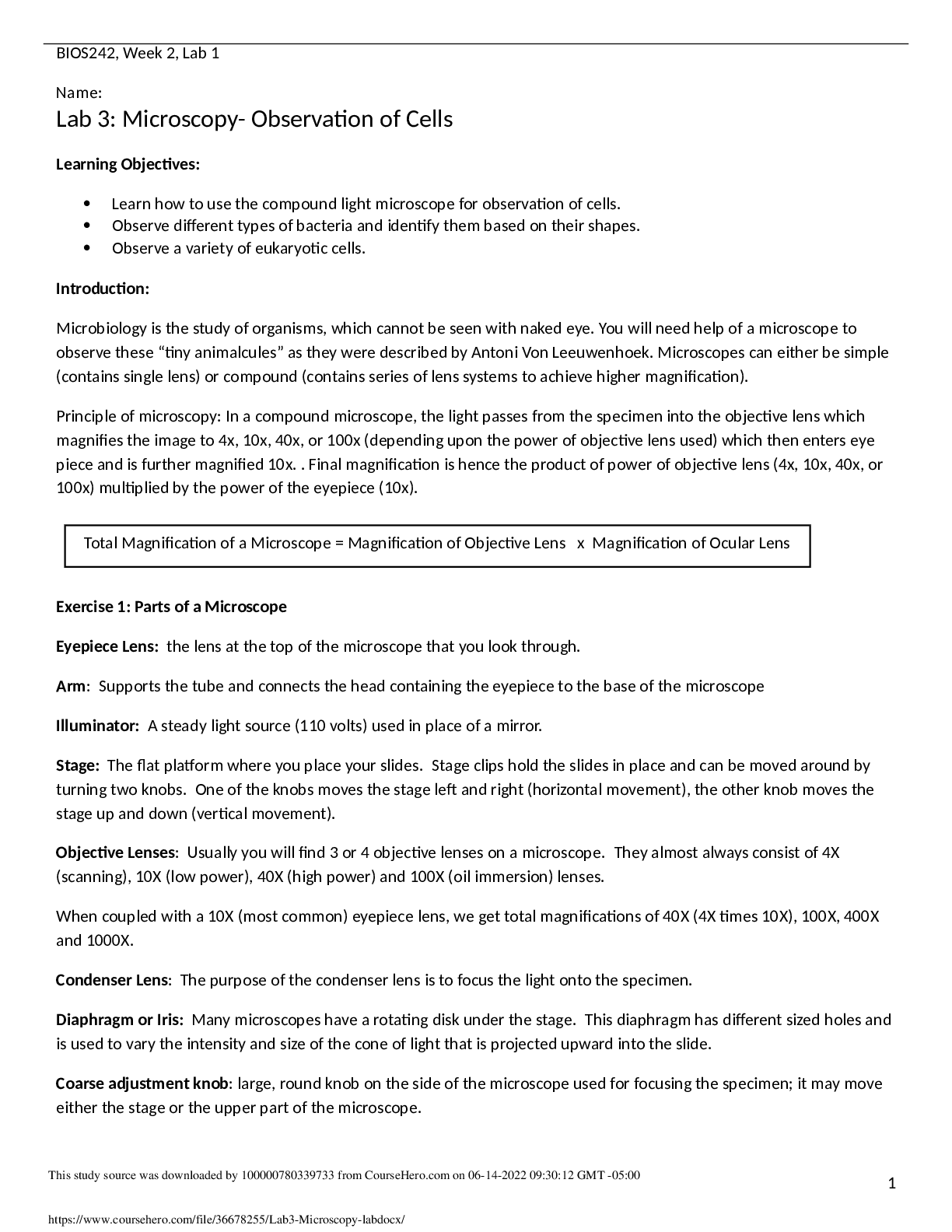Lab 3 Microscopy- Observation of Cells BIOS242, Week 2
Course
Education
Subject
Chemistry
Category
Questions and Answers
Pages
9
Uploaded By
ATIPROS
Preview 2 out of 9 Pages


Download all 9 pages for $ 7.00
Reviews (0)
$7.00
